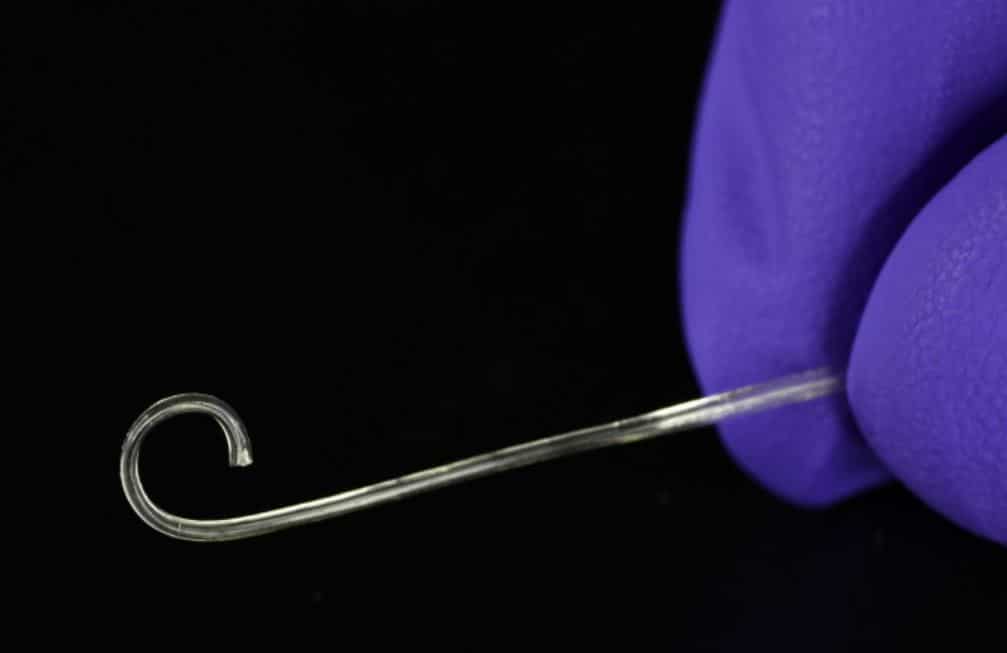by Daniel Bautista Salinas, Erh-Ya (Asa) Tsui, Imperial College London
Cochlear implants (CIs) have been shown to improve hearing in patients suffering from sensorineural hearing loss.
CIs bypass the function of the damaged ear by converting sound into electrical pulses. CIs deliver electrical pulses to the hearing nerve via an electrode array (EA) that is carefully inserted in the scala tympani in a complex surgical procedure.
However, current CIs can cause trauma during insertion, threatening hearing preservation. Thus, existing pre-curved CIs use external mechanisms to be inserted.
A Novel Functional Atraumatic Self-Shaping Cochlear Implant
To overcome the obstacles current CIs might cause during surgery, ICL researchers at the Hamlyn Centre proposed a novel functional atraumatic self-shaping cochlear implant. It is a pre-curved CI that curls into the cochlea under the influence of body temperature.

a) Ear anatomy section. b) Schematic showing the envisaged behavior of the self-shaping CI during insertion. Blue represents the part of the implant at a temperature below Tg and red represents the part of the implant at a temperature above Tg
By comparison to existing CIs, the proposed device can be smaller and easily inserted. The implant material is implemented in COMSOL to simulate its behaviour, and an analytical study is conducted to verify the material model.
Moreover, two additional studies are carried out to assess the implant recovery forces and their ability to recover shape even with embedded metal.
Numerical modelling and experimental tests suggest that the CI recovery forces are below the rupture threshold. The recovery study in a functional self-shaping CI shows that the device will still be able to curl in the cochlea.
This implant concept has thus shown potential to be eventually used in clinical practice and improve hearing outcomes seen at present.

a) Plot showing the recovery angle in percentage for the first (circle), second (triangle), and third (square) free recovery cycle. The horizontal lines represent the recovery angle in percentage for an implant of 0.67 mm in diameter without an internal electrode for the same three cycles. b) Plot showing the recovery angle in percentage for the first free recovery cycle and the stiction implants (black and green dots). Stiction implants are not considered to calculate the fit line. The horizontal line represents the recovery angle in percentage for an implant of 0.67 mm in diameter without an internal electrode for the first cycle. In both plots, the vertical line marks the point in which, theoretically, the inner hole is smaller than the electrode diameter. In both plots, red background denotes that the experiment is carried out at a temperature above Tg. (c) Actual curled implant after molding. d) Curled implant after first free recovery test. e) Curled implant after second free recovery test. f) Curled implant after third free recovery test
This research was supported by EPSRC Programme Grant “Micro-robotics for Surgery (EP/P012779/1)” (Daniel Bautista-Salinas, Mohamed E. M. K. Abdelaziz, Burak Temelkuran, Eric M. Yeatman, Charlie T. Huins, and Ferdinando Rodriguez y Baena, “Towards a Functional Atraumatic Self-Shaping Cochlear Implant“,Macromolecular Materials and Engineering, October 2021).
Source: Imperial College London






